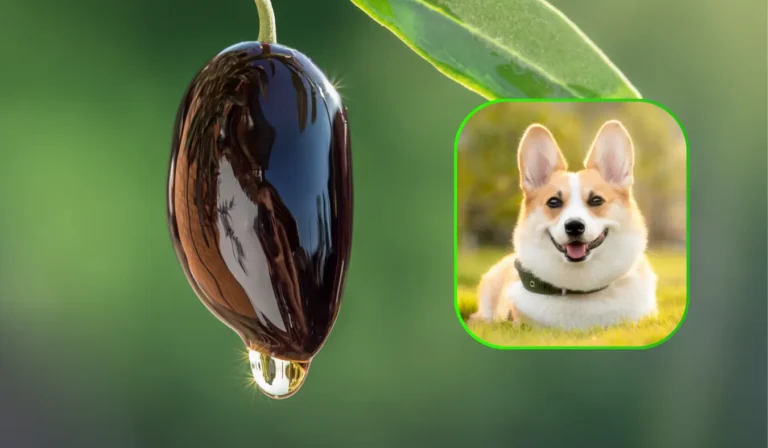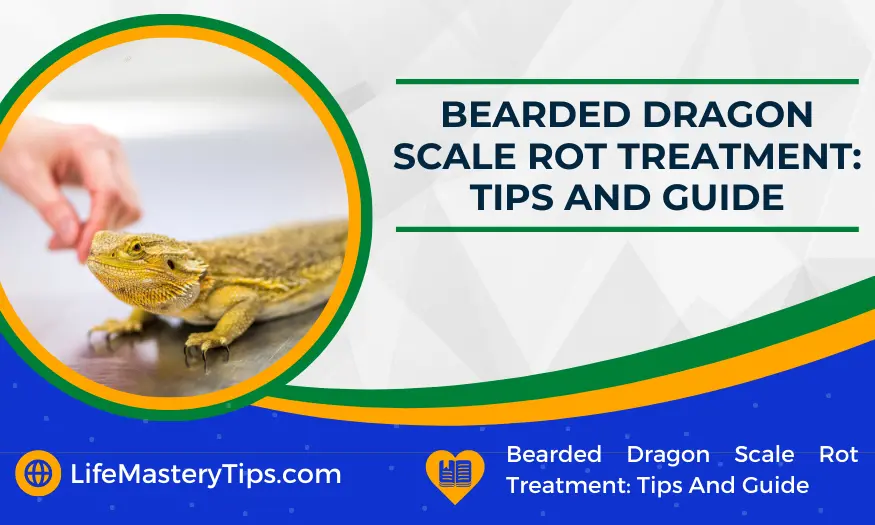Can Dogs Eat Olives? Have you ever found your canine companion gazing at you with longing eyes while you savor a bowl of olives? The irresistibly cute plea may make you ponder: Is it safe for dogs to eat olives? As with many aspects of dog nutrition, the answer isn’t a straightforward yes or no.
According to reputable sources like the American Kennel Club and Rover, olives themselves are generally considered non-toxic to dogs. Surprisingly, some sources, such as the Texas Hill Country Olive Co., even suggest that commercially prepared dog food might incorporate olives for their potential health benefits.
These benefits encompass healthy fats, vitamins, and antioxidants. However, caution is advised, as PetMD emphasizes the importance of moderation. Olives boast high fat and sodium content, which, in excessive amounts, could lead to digestive issues or, in severe cases, pancreatitis.
If you want to feed coconut then read this guide: Can Dogs Eat Coconut?
Can Dogs Eat Olives?
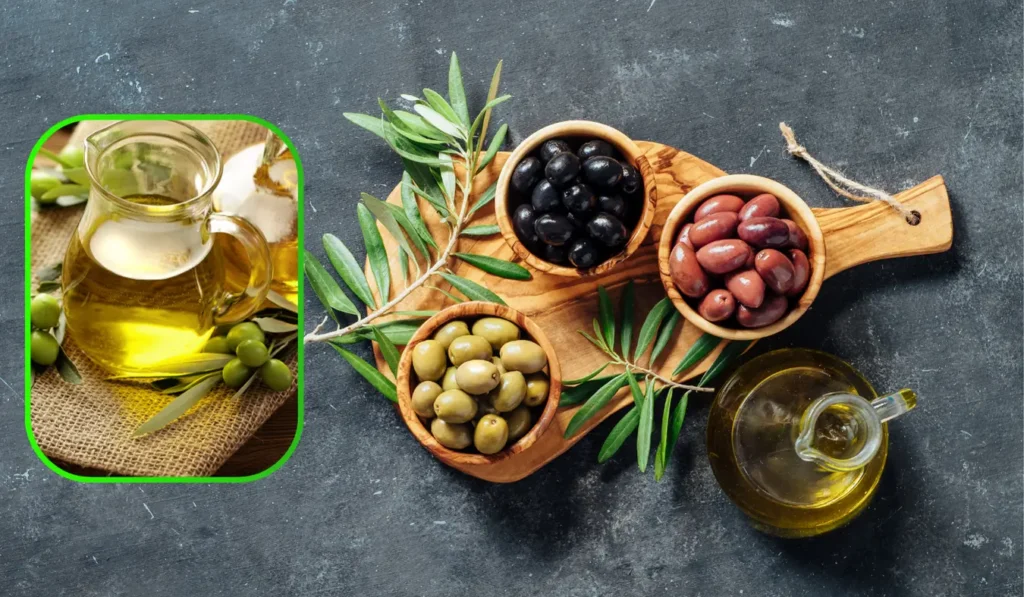
Olives can be a fun and occasional treat for your furry friend, but it’s crucial to remember that “less is more” applies here. Just like with any human food, olives should never be a regular part of your dog’s diet.
Pro Tip: Think of olives as a tiny dessert, not a doggy dinner!
Here’s why moderation is key:
Dog’s Digestive System: A canine digestive system is designed to process primarily meat-based proteins. Olives, while containing some healthy fats, can be difficult to digest in large quantities, leading to tummy troubles.
Calorie Overload: Olives are a concentrated source of calories. Overindulging can lead to weight gain, especially for smaller dogs.
Unnecessary Sodium: Many commercially prepared olives are packed with sodium, which can be harmful to dogs in excess. It can cause dehydration, vomiting, and even sodium ion poisoning in severe cases.
Risks Associated with Overconsumption:
| Risk Factor | Potential Consequences |
|---|---|
| High Fat Content | Upset stomach, diarrhea, pancreatitis (in extreme cases) |
| Excessive Calories | Weight gain, obesity-related health problems |
| Sodium overload | Dehydration, vomiting, sodium ion poisoning (severe cases) |
Remember: When in doubt, always consult your veterinarian before introducing any new food to your dog’s diet, including olives
Preparing Olives for Dog Consumption
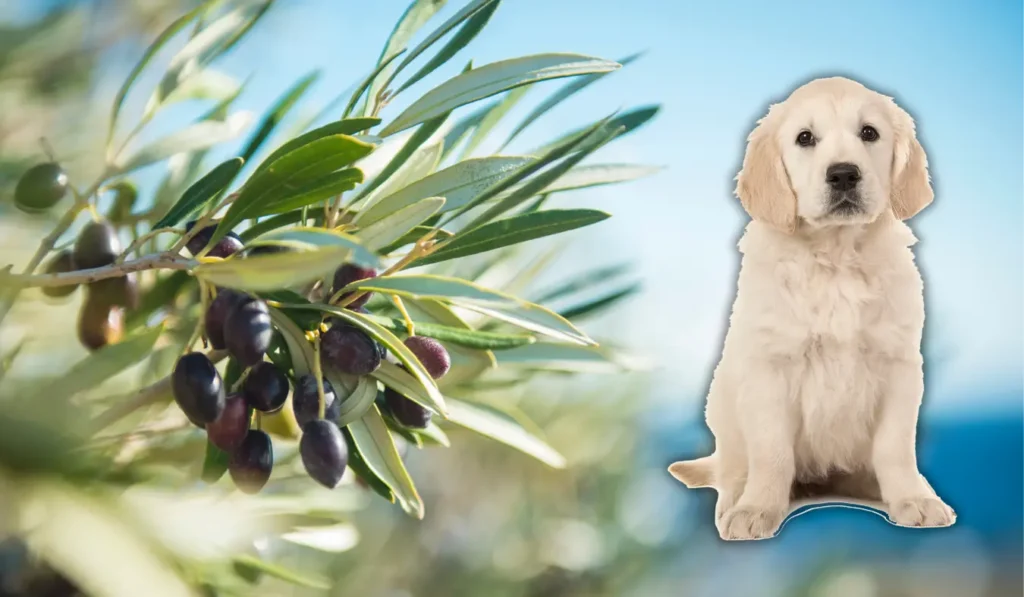
Olives can be a tempting treat to share with your furry friend, but before you do, some crucial safety steps are essential. Here’s how to ensure your pup enjoys olives safely:
1. Pitting: Prevent Choking Hazards
The Pit Problem: Olive pits pose a significant choking hazard for dogs. Their small size and smooth texture can easily get lodged in your dog’s throat, causing serious complications.
Safeguarding Your Pup: Always remove the pit completely before offering an olive to your dog. Use a sharp knife or olive pitter to ensure thorough removal. Don’t rely on pre-sliced olives, as pits can sometimes remain hidden.
Pro Tip: Double-check for hidden pits! Even commercially pitted olives can occasionally have a fragment remaining. A quick visual inspection can prevent a potential emergency.
2. Nix the Seasonings and Oil: Avoiding Added Ingredients
Seasoned Olives: A No-Go: Olives marinated in brine, herbs, garlic, or other seasonings are not suitable for dogs. These ingredients can upset your dog’s stomach or even be toxic.
Oiled Up Trouble: Olives packed in oil can be too high in fat for dogs, leading to digestive issues and weight gain. Opt for dry-cured olives instead.
Table: Seasoning Danger Zones for Dogs
| Seasoning | Potential Risks |
|---|---|
| Garlic | Toxic in large amounts, can cause anemia |
| Onions | Toxic in all forms, can damage red blood cells |
| Chilies | Upset stomach, diarrhea |
| Salt (high amounts) | Excessive thirst, dehydration |
Remember: When in doubt, leave it out! Stick to plain, unseasoned olives for your dog’s safety.
Bonus Tip: Consider using leftover olive brine (after removing the olives!) as a delicious and healthy flavor booster in your dog’s water bowl. Just be sure to dilute it significantly, as the brine can be high in sodium.
Green vs. Black Olives: Nutritional Differences for Dogs
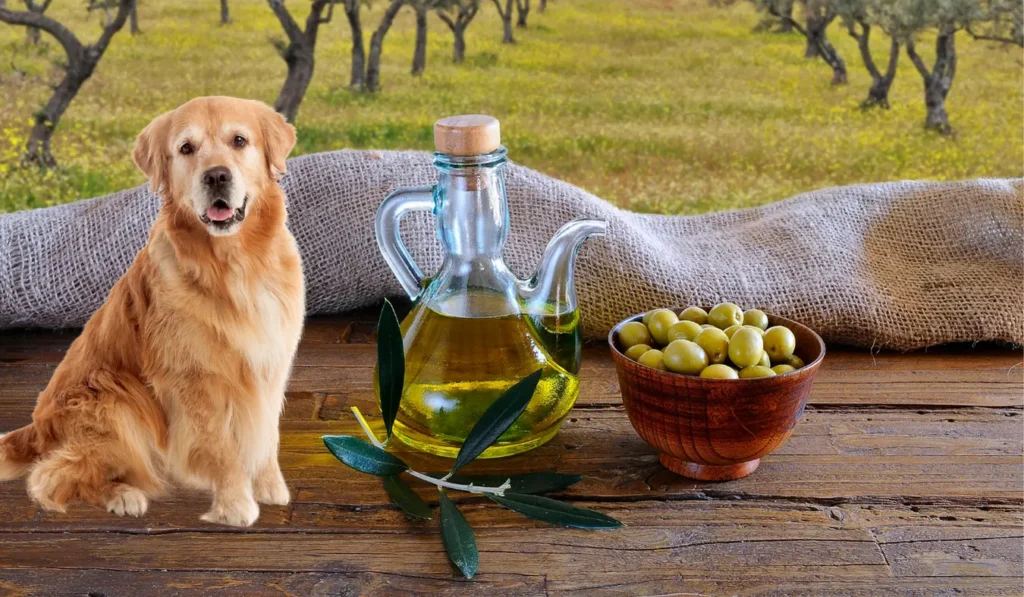
While both green and black olives are technically safe for dogs in moderation, there are some key nutritional differences to consider:
Green olives are essentially unripe black olives. They’re harvested earlier in the season, boasting a firmer texture and a more bitter flavor. Black olives, on the other hand, are allowed to fully mature on the tree, resulting in a softer texture and a mellower taste.
Sodium: A Cause for Caution
One of the biggest nutritional differences lies in sodium content. Green olives tend to pack a higher sodium punch compared to their black counterparts. This is because they’re often cured in a brine solution for a longer duration to enhance their flavor and crispness. Sodium, in large quantities, can be detrimental to canine health, causing excessive thirst, urination, and even electrolyte imbalances.
Black Olives Might Be the Better Choice
Given their lower sodium content, black olives might be a slightly better option for occasional treats. However, moderation is key for both varieties.
Pro Tip: Keep it Simple and Safe
Remember, a balanced diet is the cornerstone of your dog’s health. Olives should be considered occasional treats, not dietary staples.
Alternatives to Olives for Dog Treats: Healthy Options with Similar Benefits
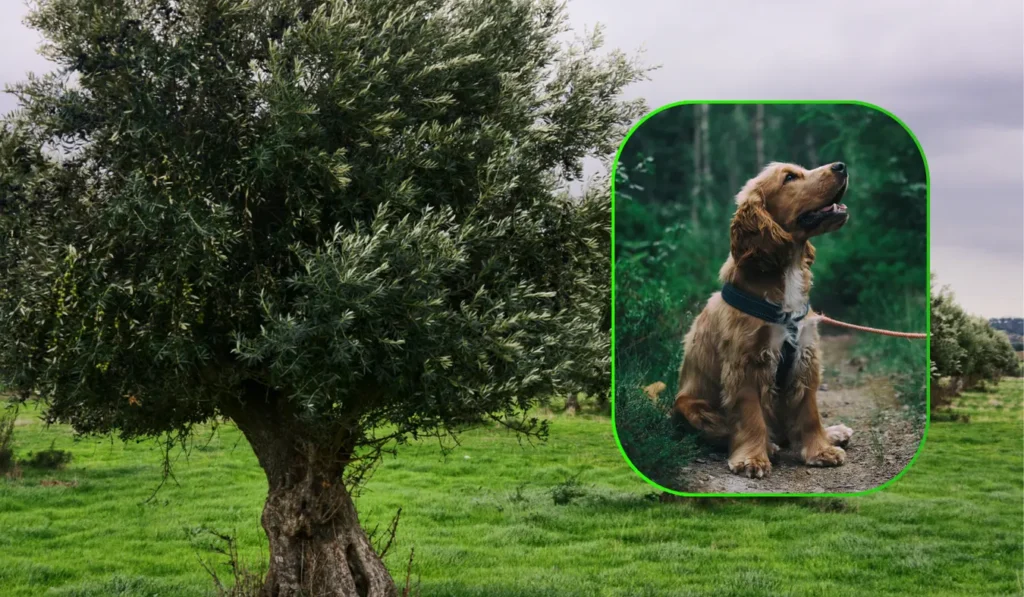
While olives can be an occasional treat for your pup in moderation, there are many other healthy and delicious options that provide similar benefits without the potential drawbacks. Here’s a guide to some excellent alternatives:
Fruits and Vegetables (Always Wash Before Feeding):
Apples: Rich in fiber and vitamin C, perfect for dental health and immune system support. Pro Tip: Remove the core and seeds first!
Bananas: Packed with potassium and good for digestion. Keep in mind, bananas are high in sugar, so offer them in moderation.
Blueberries: Bursting with antioxidants, blueberries promote overall health and cognitive function.
Carrots: Beta-carotene for healthy vision and crunchy for teeth cleaning.
Green Beans: Low in calories and high in fiber, green beans are a great low-fat snack.
Table: Fruits and Veggie Portion Control for Dogs
| Fruit/Vegetable | Small Dog (Under 20 lbs) | Medium Dog (20-50 lbs) | Large Dog (Over 50 lbs) |
|---|---|---|---|
| Apple Slices | 1-2 slices | 2-3 slices | 3-4 slices |
| Banana Slices (1 small banana) | 1-2 slices | 3-4 slices | 4-6 slices |
| Blueberries | 10-15 berries | 15-20 berries | 20-25 berries |
| Baby Carrots | 2-3 carrots | 4-5 carrots | 5-7 carrots |
| Green Bean Sticks | 3-4 sticks | 5-6 sticks | 7-8 sticks |
Meats and Proteins
Cooked Chicken or Turkey (Skinless and Boneless): Lean protein source perfect for training treats or muscle building.
Salmon: Excellent source of omega-3 fatty acids for healthy skin and coat. Important Note: Cook salmon thoroughly before feeding to your dog, as raw fish can carry parasites.
Liver: Nutrient-rich organ meat, but limit due to high vitamin A content.
Pro Tip: Dehydrate these meats at home for long-lasting, shelf-stable treats!
Chews
Deer Antlers: Long-lasting chew that helps satisfy chewing urges and keep teeth clean.
Bully Sticks: Another great option for a long-lasting chew, but monitor your dog to prevent them from swallowing large pieces.
Frozen Treats
Frozen Kong Stuffed with Yogurt (Plain, Unsweetened): A refreshing and mentally stimulating option, especially on hot days.
Frozen Broth Cubes: Made with low-sodium chicken or beef broth, these cubes provide hydration and entertainment.
Always Remember:
By offering these healthy alternatives, you can keep your furry friend happy and healthy without resorting to olives.
Veterinarian Consultation: When to Seek Professional Advice
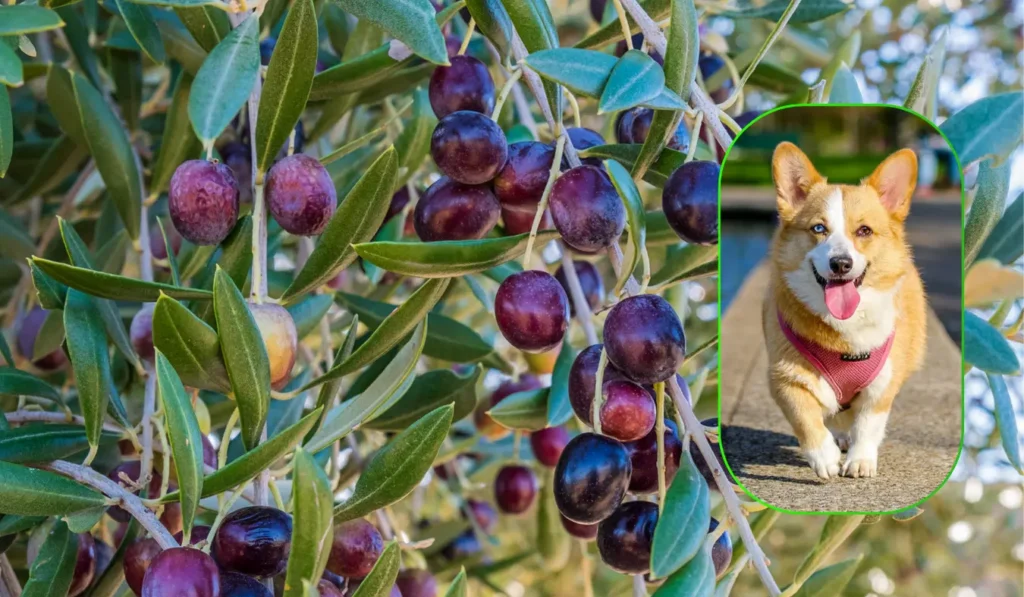
Don’t wait to see a vet if your dog consumes a large quantity of olives or shows any concerning signs after eating them. Early intervention can make a big difference in your pup’s recovery. Here’s a breakdown of situations that warrant a trip to the vet:
1. Accidental Olive Ingestion (Large Quantities)
How much is “too much”? While a single olive likely won’t cause harm, a whole jar or a plate full can be dangerous. The exact amount can vary depending on your dog’s size and breed.
Warning Signs:
2. Signs of Illness After Eating Olives
Olives, especially brined or seasoned varieties, can trigger various health issues in dogs. Be aware of these symptoms:
Digestive Issues: Upset stomach, vomiting, or diarrhea are common signs of olive intolerance.
Sodium Poisoning: Excessive olive consumption, particularly from brined olives, can lead to sodium ion poisoning. Symptoms include tremors, weakness, seizures, and excessive thirst.
Pancreatitis: Olives are high in fat, which can trigger pancreatitis (inflammation of the pancreas) in some dogs. Signs include vomiting, abdominal pain, and fever.
Pro-Tip: Keep the ASPCA Animal Poison Control Center number (888-426-4435) handy in case of emergencies.
Table: When to Call the Vet
| Symptom | Action |
|---|---|
| Vomiting or diarrhea (more than once) | Call your vet within a few hours. |
| Lethargy, loss of appetite, or abdominal pain | See a vet within 24 hours. |
| Signs of dehydration (dry gums, excessive panting) | Go to the vet immediately. |
| Tremors, weakness, seizures, or excessive thirst | Emergency! Seek immediate veterinary care. |
Remember: It’s always better to be safe than sorry. If you’re unsure whether your dog’s reaction to olives is serious, err on the side of caution and consult your veterinarian.
Real-Life Examples: Dogs and Olives in Moderation
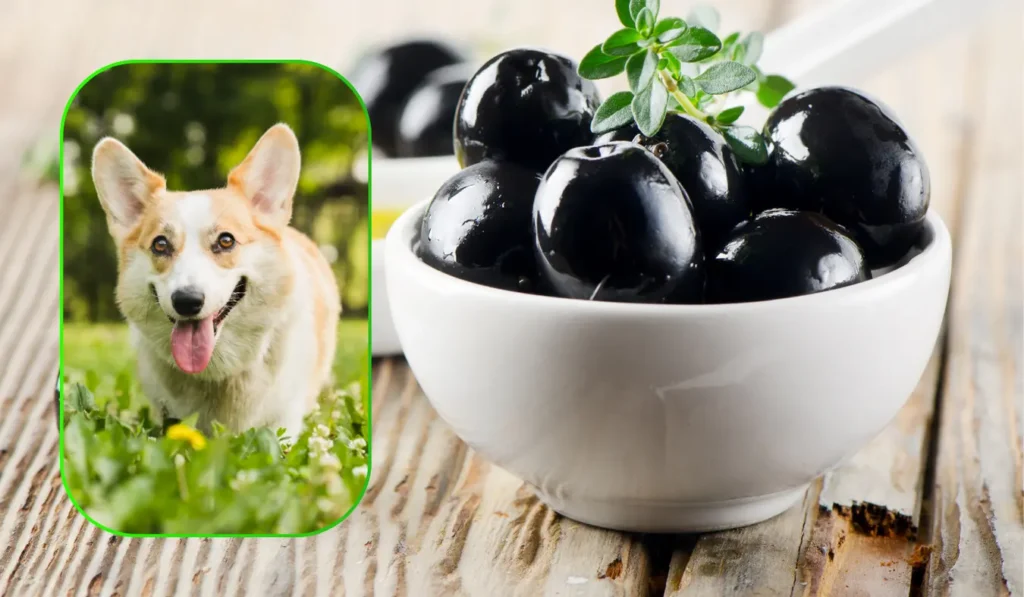
Ever wondered if those pleading eyes at dinner time deserve a tiny olive? While olives aren’t inherently toxic to dogs, responsible feeding is key. Let’s explore some real-life scenarios and how moderation plays a crucial role:
Scenario 1: The Accidental Olive
The Situation: Your dog snatches an olive that fell off the counter during dinner prep.
The Fix: Don’t panic! One or two olives likely won’t cause harm to a healthy dog.
Pro Tip: Monitor your dog for any signs of digestive upset like vomiting or diarrhea. If these occur, consult your veterinarian.
Scenario 2: The Savvy Snacker
The Situation: Your Beagle develops a fondness for olives and begs for more during Mediterranean night meals.
The Fix: It’s tempting to share, but resist! Olives are high in fat and sodium, which can lead to weight gain and dehydration in dogs with regular overindulgence.
Healthy Alternative: Offer a small, dog-safe treat like a slice of apple or a single green bean instead.
Scenario 3: The Culinary Dog
The Situation: You’re preparing a fancy olive tapenade and your foodie pup shows keen interest.
The Fix: Be cautious! Tapenade often contains ingredients like garlic and onions, which can be toxic to dogs. Stick with plain, pitted olives for your furry friend.
Fun Fact: Did you know some dog bakeries offer special olive oil-infused treats formulated specifically for canine consumption? These can be a great way to satisfy your dog’s olive curiosity safely.
Table: Olive Consumption by Breed Size
| Dog Breed Size | Safe Amount of Olives (As an Occasional Treat) |
|---|---|
| Small Dog (under 10 lbs) | 1/4 of a single olive, max once a week |
| Medium Dog (10-25 lbs) | 1/2 of a single olive, max once a week |
| Large Dog (25+ lbs) | 1 whole olive, max once a week |
Remember: This table is a general guideline. Always consult your veterinarian for specific advice regarding your dog’s individual needs and health conditions.
Olives can be a delightful occasional treat for your dog, but moderation is key. By following these tips and keeping an eye on portion sizes, you can share your love of olives with your furry companion safely.
Expert Opinions on Dog Olive Consumption
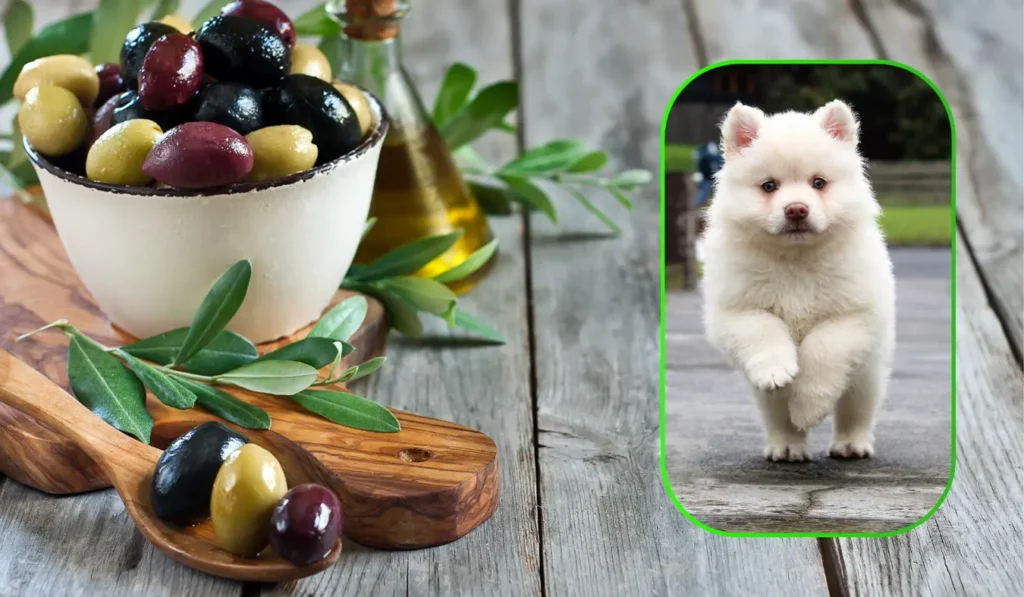
When it comes to feeding your dog olives, consulting a professional is always recommended. Here’s a breakdown of what veterinarians and pet nutritionists have to say:
In Favor of Olives (in Moderation)
Dr. Jennifer Coates, Board-Certified Veterinarian at AKC: Dr. Coates acknowledges that olives contain healthy fats and can be a nutritious occasional treat for dogs on a balanced diet. However, she emphasizes the importance of moderation due to the high-calorie content.
Dr. Lisa Weitz, Pet Nutritionist: Dr. Weitz highlights the presence of monounsaturated fats in olives, which can be beneficial for a dog’s coat health. She advises offering a single plain olive as an occasional treat.
Pro Tip: Since every dog is different, consult your veterinarian about the appropriate amount of olives for your furry friend, considering factors like breed, size, and overall health.
Cautious About Olives
Dr. Sara Ochoa, Veterinarian at PetMD: Dr. Ochoa warns that olives, despite not being toxic, can cause digestive issues like diarrhea and vomiting if consumed in large quantities. She advises against olives with high sodium content (often found in canned varieties).
Jacqueline Burch, Certified Veterinary Technician: Burch emphasizes the choking hazard posed by olive pits. She recommends only offering pitted olives and supervising your dog while they enjoy their treat.
Table: Key Points from Experts
| Expert | Viewpoint on Olives for Dogs | Key Considerations |
|---|---|---|
| Dr. Jennifer Coates (Veterinarian) | Can be a nutritious occasional treat | Moderation is crucial due to high calories |
| Dr. Lisa Weitz (Pet Nutritionist) | Beneficial for coat health (monounsaturated fats) | Limit to a single plain olive |
| Dr. Sara Ochoa (Veterinarian) | May cause digestive issues in large quantities | Avoid olives with high sodium content |
| Jacqueline Burch (Veterinary Technician) | Choking hazard from pits | Only offer pitted olives and supervise consumption |
Remember: It’s always better to be safe than sorry. If you’re unsure about introducing olives to your dog’s diet, err on the side of caution and consult your veterinarian.
Potential Allergic Reactions in Dogs to Olives

While uncommon, some dogs can develop allergies to olives. It’s important to be aware of the signs and take action if your dog experiences a reaction. Allergies occur when a dog’s immune system overreacts to a harmless substance, like a protein in olives. Symptoms can appear immediately after ingestion or take several hours to develop.
Common Signs of Olive Allergy in Dogs:
Pro-Tip: Take a picture of your dog’s skin or note the timing of symptoms if they occur after eating olives. This information can be helpful for your veterinarian in diagnosing the allergy.
Recognizing the Cause:
If you suspect an olive allergy, eliminate them from your dog’s diet and monitor them closely. Here’s a table summarizing the investigative process:
| Action | Observation |
|---|---|
| Remove olives from your dog’s diet for at least 2-4 weeks. | Do symptoms improve? |
| If symptoms improve, reintroduce a small amount of olive (under vet supervision) and monitor closely. | Does the reaction return? |
| If symptoms return after reintroduction, olives are likely the culprit. | Consult your veterinarian for a diagnosis and alternative treat recommendations. |
Remember:
Not all allergies are immediate. Delayed reactions can be trickier to diagnose. If your dog experiences any concerning symptoms after eating olives, consult your veterinarian immediately.
Some dogs might be sensitive to olive oil, so consider avoiding it as well if your dog has an olive allergy. Certain olive preparations, like olives marinated with garlic or other ingredients, can cause digestive upset even without an allergy. Stick to plain olives for your dog.
By understanding the signs of olive allergy and taking the necessary steps, you can keep your furry friend safe and healthy.
Digestive Issues and Olive Consumption

While olives themselves aren’t inherently toxic to dogs, they can cause some digestive upset in certain situations. Let’s delve deeper into the potential issues and how to navigate them:
Upset Stomach and Diarrhea
Olive Oil Factor: The fat content in olives, particularly in olive oil clinging to the fruit, can irritate a dog’s digestive system. This is especially true for dogs with sensitive stomachs or those unaccustomed to fatty foods.
Fiber Frenzy: Olives contain a good amount of fiber, which is great for human digestion, but can be overwhelming for some dogs. A sudden influx of fiber can lead to loose stools or diarrhea.
Quantity Matters: As with any treat, moderation is key. Overindulging in olives can overload a dog’s digestive system, leading to discomfort.
Pro-Tip: Introduce olives to your dog gradually, starting with a single small piece and monitoring their reaction for 24 hours.
Recognizing Digestive Distress
Loose stools or diarrhea: This is the most common sign of digestive upset after eating olives.
Vomiting: While less frequent, vomiting can occur if your dog consumes a large number of olives.
Lethargy: If your dog seems unusually tired or withdrawn after eating olives, it could be a sign of digestive discomfort.
Loss of appetite: A dog experiencing nausea or stomach pain may lose interest in food.
If your dog displays any of these signs after eating olives, consult your veterinarian immediately.
Table: Minimizing Digestive Issues
| Action | Benefit |
|---|---|
| Start Small: Introduce olives gradually, one small piece at a time. | Allows your dog’s digestive system to adjust. |
| Monitor Closely: Observe your dog for signs of discomfort after consuming olives. | Early detection helps prevent worsening symptoms. |
| Prioritize Hydration: Ensure your dog has access to plenty of fresh water to aid digestion. | Water helps move food through the digestive system. |
| Consult Your Vet: If your dog experiences significant digestive upset, seek professional advice. | Early intervention can prevent complications. |
Every dog is different. Some may tolerate olives with no issues, while others might experience digestive problems. Always prioritize your dog’s regular, balanced diet and introduce new foods cautiously.
Long-Term Effects of Olives on Canine Health
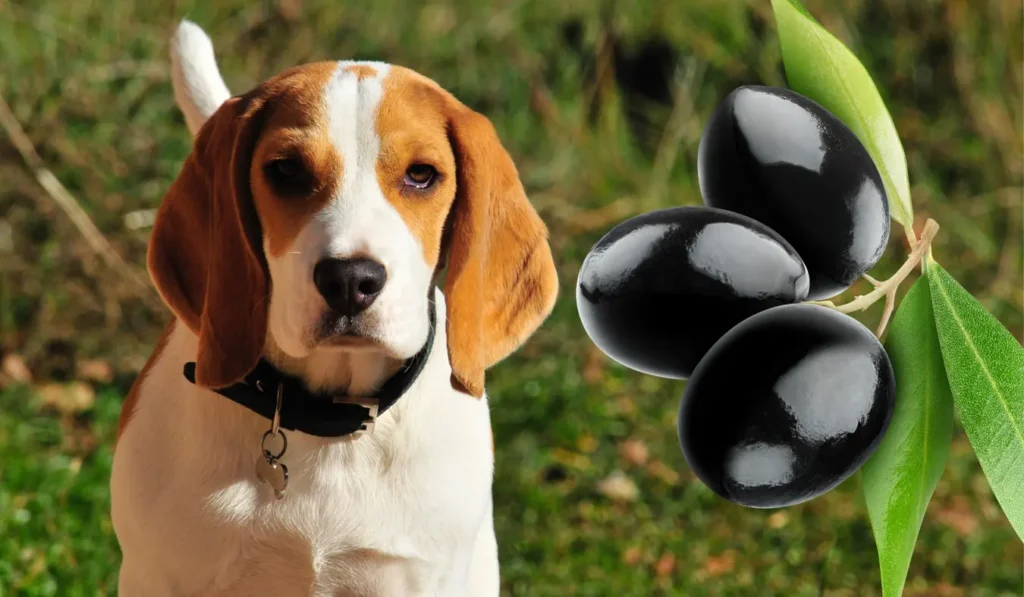
Research on the long-term effects of olives on canine health is limited, but some potential benefits and drawbacks are emerging. Here’s a breakdown based on current understanding:
Potential Benefits
Healthy Fats: Olives are a good source of monounsaturated fats, like oleic acid, which Dr. Jennifer Coates, a board-certified veterinary internal medicine specialist, suggests may contribute to a healthy heart and coat in dogs. However, a balanced diet should already provide these fats.
Antioxidants: Olives contain antioxidants that may offer some anti-inflammatory benefits, according to Dr. Lisa A. Elliott, a veterinarian and author. More research is needed to confirm this in dogs specifically.
Drawbacks
High Sodium: Olives, particularly commercially prepared varieties, can be high in sodium. Long-term consumption of excess sodium can lead to dehydration and even sodium ion poisoning in dogs, warns Dr. Danielle Grimmett, a veterinarian specializing in emergency and critical care.
Digestive Issues: Olives are a new food for dogs and may cause digestive upset in some, especially if consumed in large quantities.
Pro Tip: Always consult your veterinarian before introducing any new food to your dog’s diet, including olives.
Table: Summary of Potential Long-Term Effects
| Effect | Potential Benefit | Potential Drawback |
|---|---|---|
| Heart Health | May contribute to a healthy heart (monounsaturated fats) | |
| Skin & Coat Health | May contribute to a healthy coat (monounsaturated fats) | |
| Inflammation | May offer some anti-inflammatory benefits (antioxidants) | Needs further research |
| Dehydration | High sodium content | |
| Sodium Ion Poisoning | High sodium content | |
| Digestive Upset | New food for dogs |
The long-term effects mentioned above are based on limited research and potential benefits may not outweigh drawbacks for all dogs. Olives are not a necessary part of a dog’s diet and a balanced commercial food should provide all the nutrients they need.
While some potential benefits of olives for dogs exist, more research is required. The drawbacks, particularly high sodium content, cannot be ignored. It’s best to discuss olive consumption with your veterinarian and prioritize a balanced diet for your canine companion.
Prioritizing a Balanced Diet (Based on Research)
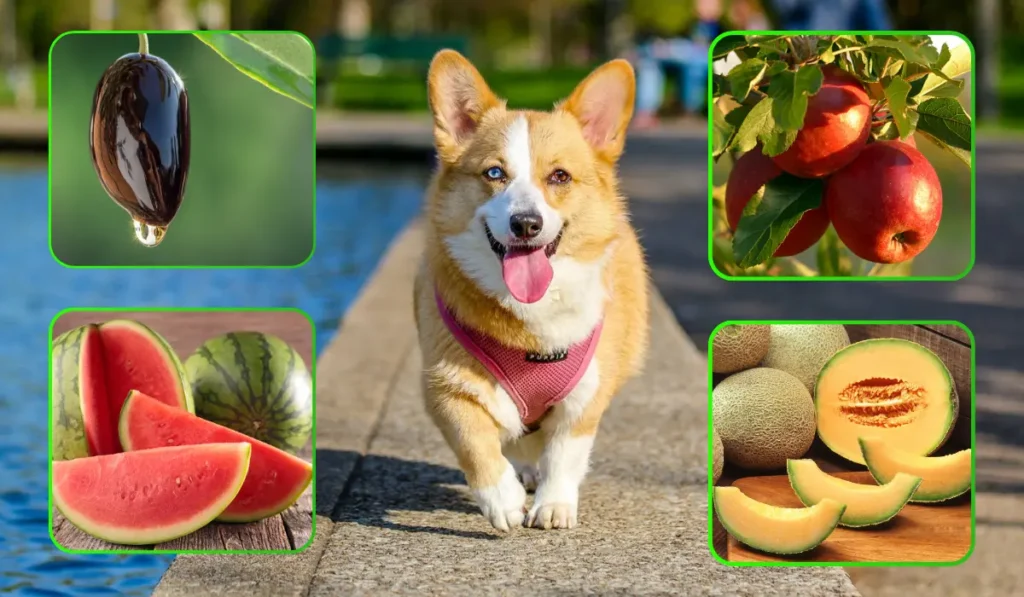
While olives aren’t inherently toxic to dogs, responsible feeding is crucial to prioritize their overall health. Here’s a breakdown based on research from veterinary professionals:
Olives are high in fat and sodium, which can lead to digestive upset, weight gain, and pancreatitis in large quantities. Veterinarian Dr. Jennifer Schwartz advises limiting olives to a rare occasional treat.
Safe Preparation:
Prioritizing a Balanced Diet: A complete and balanced dog food formulated for your dog’s age, breed, and activity level should be the foundation of their diet. Olives offer minimal nutritional benefits for dogs and shouldn’t replace essential nutrients from their regular food.
Pro Tip: Discuss healthy, dog-approved treat alternatives with your veterinarian. Many fruits and vegetables provide vitamins and minerals in a dog-friendly format.
If your dog consumes a large quantity of olives (more than a few). They show signs of illness after eating olives (vomiting, diarrhea, lethargy). Olives are not a necessary part of a dog’s diet. By focusing on a balanced diet and consulting your veterinarian about safe treats, you can ensure your furry friend gets the best nutrition for a healthy and happy life.
Bonus Read: Can Dogs Eat Olives?
Based on research from various veterinary sources including the American Kennel Club (AKC) and PetMD, here’s the verdict on olives for dogs. In moderation, olives can be a safe and healthy occasional treat for your pup. However, there are important considerations:
Pro Tip: Consult your veterinarian before introducing any new food to your dog’s diet, especially if they have pre-existing health conditions.
Veterinarians like Dr. Carly Fox from the Schwarzman Animal Medical Center [AKC] and Dr. Jennifer Larsen, a board-certified veterinary nutritionist agree that while olives aren’t inherently toxic, they offer minimal nutritional value for dogs on a complete diet. The high fat and sodium content can be problematic in large quantities.
Safe and Healthy Treats for Dogs
Instead of olives, consider these veterinarian-approved alternatives for healthy and delicious dog treats:
Remember, a happy and healthy dog deserves a balanced diet with occasional, healthy treats. By following these guidelines, you can ensure your furry friend enjoys a variety of delicious and nutritious options!
